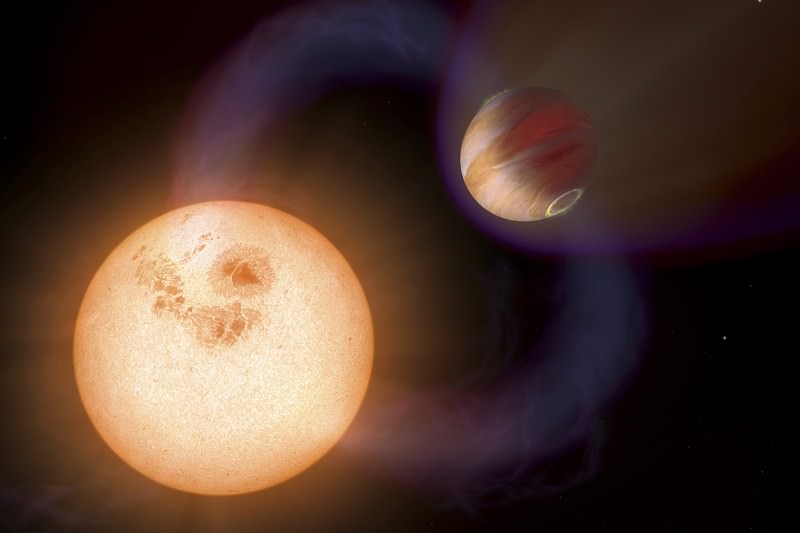
From New Scientist: Recent theory:
The idea is that smaller, colder stars have thicker atmospheres. “That provides handles with which the star can grab onto the planet and vice versa,” Winn says. Over time, those gravitational handles exert a tidal force on the planet, pulling it and its star into alignment.
But then:
But one Jupiter-mass planet discovered earlier this year, HATS-14b, seems to threaten that idea. Because it tightly circles a small star, its orbit should have flattened out quickly – but the orbit is instead tilted a whopping 76 degrees from the plane in which its star spins.
“It should have aligned with the spin of the host star, and what we’re finding is that it has not,” says study leader George Zhou, who conducted the research at the Australian National University in Canberra. “It was quite obvious from some of the very first measurements that it was an outlier.” … Understanding why, or finding other planets like HATS-14b, could knock down the tidal theory – which even Winn is starting to doubt.
In another new paper, Winn and Gongjie Li of Harvard University address another flaw in the traditional idea… More.
Hmmmm. The first exoplanets began to be discovered in the early 1990s. It’s probably too early for strong theories.
Here’s the abstract:
The obliquities of planet-hosting stars are clues about the formation of planetary systems. Previous observations led to the hypothesis that for close-in giant planets, spin-orbit alignment is enforced by tidal interactions. Here, we examine two problems with this hypothesis. First, Mazeh and coworkers recently used a new technique — based on the amplitude of starspot-induced photometric variability — to conclude that spin-orbit alignment is common even for relatively long-period planets, which would not be expected if tides were responsible. We re-examine the data and find a statistically significant correlation between photometric variability and planetary orbital period that is qualitatively consistent with tidal interactions. However it is still difficult to explain quantitatively, as it would require tides to be effective for periods as long as tens of days. Second, Rogers and Lin argued against a particular theory for tidal re-alignment by showing that initially retrograde systems would fail to be re-aligned, in contradiction with the observed prevalence of prograde systems. We investigate a simple model that overcomes this problem by taking into account the dissipation of inertial waves and the equilibrium tide, as well as magnetic braking. We identify a region of parameter space where re-alignment can be achieved, but it only works for close-in giant planets, and requires some fine tuning. Thus, while we find both problems to be more nuanced than they first appeared, the tidal model still has serious shortcomings. Open access – Gongjie Li, Joshua N. Winn
See also: Don’t let Mars fool you. Those exoplanets teem with life!
Follow UD News at Twitter!